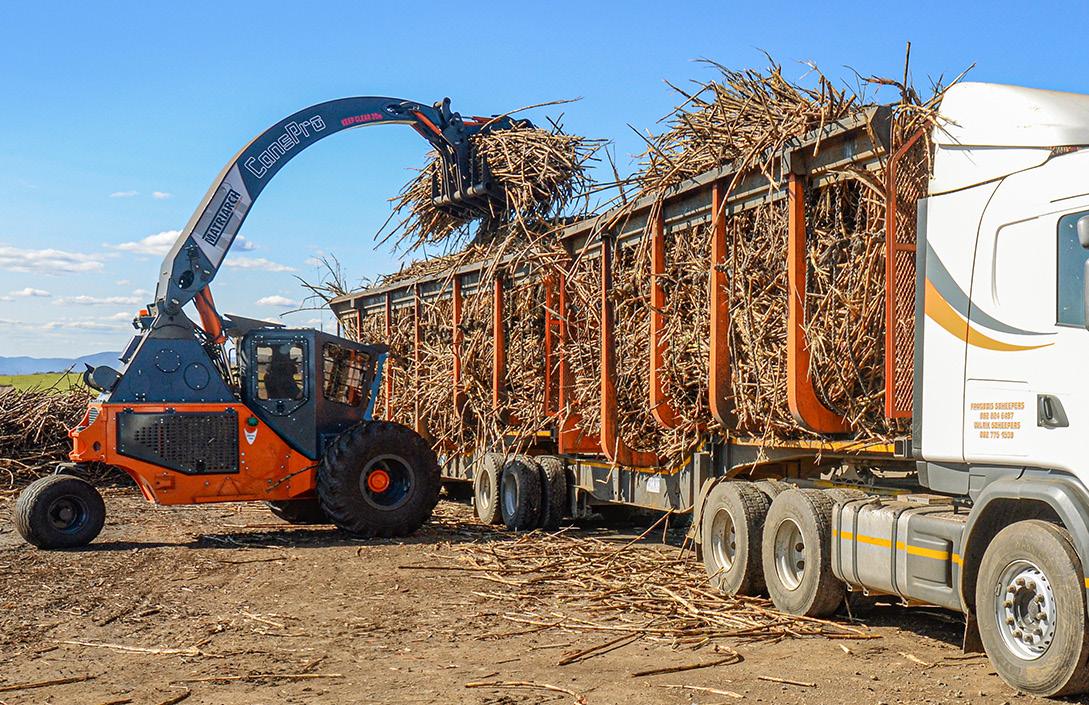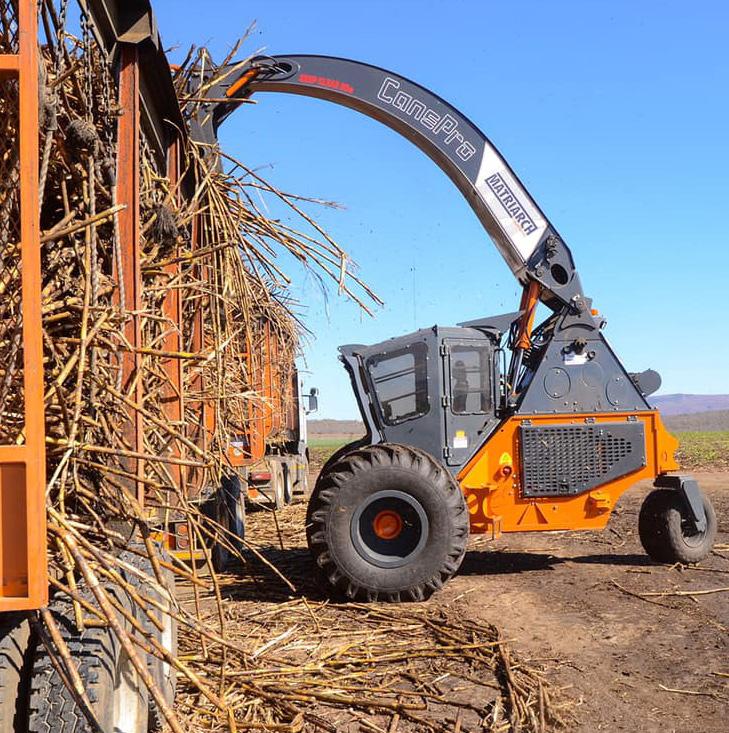
5 minute read
Matriarch machines are a sweet success story
A cane grower from Pongola in northern Zululand has found that shortening the time it takes to load a cane haulage truck bound for the nearby mill, has a direct positive impact on his bottom line profit and believes he has Bell Equipment to thank for this.
Francois Scheepers and his son, Wilrik, farm various cane production units under irrigation in a large area to the south of Pongola. This was not always so as the Scheepers are relatively recent arrivals in the district. Hailing from livestock and dry-land farming stock near Ermelo, Francois and his family moved to Pongola in 2012. “We were keen to get into growing cane and the land we found here was under maize with limited irrigation infrastructure,” Francois says. “We took out the maize and did some pioneering work on sections of land, de-bushing and slowly but surely putting in centre pivots and drip irrigation. It was a labour-intensive effort but well worth it in the end.” Francois introduced a new planting regime on his land, planting the cane in tramlines on a ridge, 500mm wide and two metres apart. This created the advantage that fertilizer could be spread on the ridges alone, so eliminating waste. The ridges also accommodate the irrigation lines which meant that when it came to harvesting and loading the cane infield, his preference would have been for a slew loader that would not damage the irrigation infrastructure. “I was introduced to Justin and Ashley Bell from Matriarch Equipment by Haig Thompson, the experienced Bell sales representative who serves our area,” Francois says. “I had suggested Matriarch design a slew loader based on a wheeled excavator carrier when they came up with the prototype of what is now the Matriarch ULTeco 5 Slew Loader.” According to Francois, the prototype slew loader served their purposes well as it had a low ground impact and avoided driving on the ridges containing the cane stools and irrigation lines. This was even though the prototype machine could only load on the left side of the cab. “Matriarch tested its prototype ULTeco 5 machine here on our land and I can tell you that with the introduction of a slew loader that did not impact our cane stools and irrigation infrastructure, our production took off and we subsequently bought the prototype,” Francois says smiling. “The average yield in Pongola is 94 tonnes per hectare and with us taking such good care of our cane stools and irrigation infrastructure by using a slew loader, we were averaging 148 tonnes per hectare.” The Matriarch ULTeco 5 model has proved highly successful in the Pongola area and Francois sold the original prototype machine they had bought to a neighbouring farmer before buying a new ULTeco 5 model, bringing the total population of these slew loaders to 11 in the immediate Pongola cane growing area. Francois follows through on the maintenance of his cane stools and irrigation infrastructure by deploying lighter tractor-trailer combinations to haul the cut cane from infield to a loading zone close to the road. It was while loading a heavier truck rig that hauls the cane to the nearby sugar mill at Pongola that Francois noticed a problem that had the potential to impact
the profitability of his harvesting operations. “We saw that when using traditional cane loaders to load our large interlinked truck on the loading zone, the time the truck spent there impacted the waiting time at the mill which meant that to still fulfil our quota, we would have to in time, use three such trucks which would mean an added capital cost, more drivers and additional fuel.” Francois explains that when he enquired whether Matriarch could adapt a forestry machine such as a Skogger to load the cane quicker, the Bell brothers came up with the idea of the Matriach CanePro, an adapted version of the LogPro used in forestry. “We liked what we saw while using a demonstration model Matriarch CanePro during March 2020 before the national COVID-19 lockdown and our own machine was delivered in June 2020,” he continues. “We had requested a slight widening of the cane grab and found this machine to be so much quicker while being safe as well thanks to its sliding counterweight.” “The Matriarch CanePro loads a 34-tonne truck in 18 minutes and the truck stays on the loading zone for an average 22 minutes compared to the 45 minutes it took to load using traditional cane loaders. Another important improvement is that the CanePro doesn’t break the cane stalks as it loads so preventing a wet loading zone. This also improves our RV (sucrose) count at the mill by as much as 1%, which may seem small but effectively turns into an additional R425 000 income in a harvesting season.” “Our former cane loader operators took to the new machine seamlessly as the controls are very similar, although the CanePro is controlled with a joystick which simplifies the process,” says Wilrik. “The machine has three speeds, ‘Snail’ for loading trucks, ‘Tortoise’ for operational loading and ‘Rabbit’ for commuting.” “We’ve been impressed with the CanePro’s frugal fuel burn of only 7 litres an hour. We’ve calculated that we have an average fuel consumption of 2,12 litres to load a 34-tonne rig, which translates into 78 cents per tonne loaded, and positively impacts our production costs,” he adds. The father and son team of Francois and Wilrik cannot be faulted for their precision farming practices and their accurate data gathering is impressive. They have seen their Cane Pro up the loading rate to 14 loads a day and totals of 109 loads to the mill per week are common. Their Matriarch CanePro is active for 5,2 hours a day which includes an hour for housekeeping on the loading zone. Francois has the last word when he says that he does not know how he ever lived without his Matriarch CanePro and ULTeco 5 Slew Loader. We tend to agree.

Bell Equipment Southern Africa,
+27 (0) 11 928 9846, susanmy@bell.co.za, www.bellequipment.com











